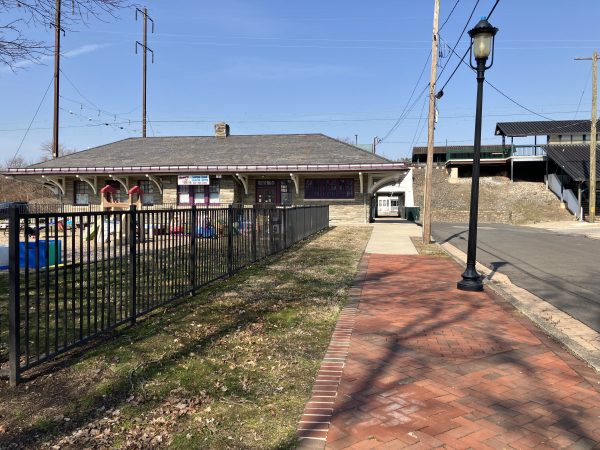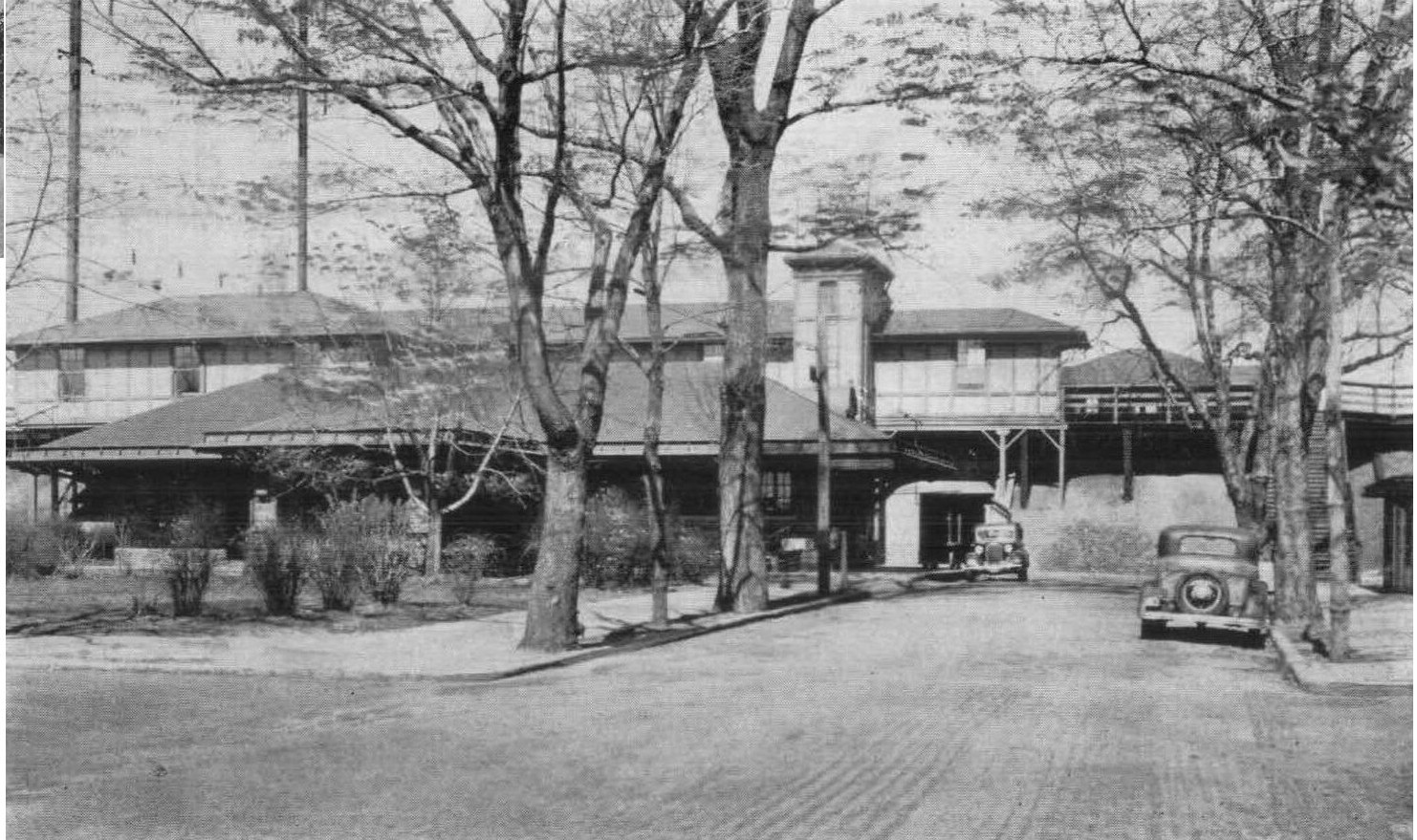In May, Heritage Conservancy finalized a Historic Preservation Easement on the Historic Bristol Train Station. Our staff worked closely with a local community organization, Bristol Historic Preservation, Inc. (BHP), to protect this local landmark.
Bristol Borough assumed ownership of the historic structure and will be responsible for its upkeep. “It is a great example to set for other communities,” says Mary Lou McFarland, Senior Preservation Specialist with Heritage Conservancy.
The project was first initiated a few years ago, when the BHP was formed by community members to save the historic train station building, which sits beside the SEPTA regional rail station but is not part of the system. “BHP did a great job of restoring and maintaining the building,” says Mary Lou.

Railroad History
The station was built in 1910-1911 and is significant for its contribution to the transportation industry in the region in the 20th century. It fits into a regional pattern of railroad growth, when the Pennsylvania Railroad upgraded its service to compete with other lines.
The original railroad was constructed in 1833 to connect Philadelphia to New York City, and Bristol was well positioned along this route. This station is one of the only remaining examples of railroad architecture from this period on this route – a symbol of the railroad’s heyday in the first quarter of the 20th century, a time of great expansion.

“It was an exciting project,” says Heritage Conservancy Conservation Acquisition Specialist Tara Camp. She worked with Mary Lou on the project for over a year.
“It is part of a much bigger story of historic preservation in Bristol,” she says. The Bristol Train Station was vital to the workings of the historic town and its mill economy. “This station is another part of the rich history of Bristol Borough, and it helps tell its story generations later.” Tara emphasizes that this plan fits into a bigger historic preservation movement in the community.

The Design
Bristol Station was designed to reflect the important position Bristol held in the region as the largest town in Bucks County in this period. The Craftsman architecture reflects the popularity of that style in the early 20th century for residential and commercial buildings.
“The Craftsman style was very popular then,” says Mary Lou, “as people moved from Victorian style into a new, simpler style.” The architect and builder, William Holmes Cookman, made his name designing several stations along the Pennsylvania Railroad.
“None of the other historic railroad buildings are left on this line,” says Mary Lou. “That makes this station particularly valuable and important for preservation.”
Like many of the major Craftsman style stations built in the region in the early 20th century, it employs a large overhanging hip roof, massive brackets, and native masonry construction. Its scale, detail, and simple interior with wainscoted walls all help to make it a quintessential example of railroad stations of the period.
“A portico was removed,” says Mary Lou, “but the original form remains, including the overhanging eaves and windows. And the stonework is well preserved.”

Viewshed
The easement protects not only the building but the entire parcel, ensuring nothing can be developed that would encroach on the structure or its sightlines from the street.
The train station property has about 350 feet of frontage along Prospect Street and significant road frontage along Beaver Street and Washington Streets, providing passersby nice views of the structure.
The landscape and limited ground-level improvements provide a viewshed and community context for the historic station building.
It sits below SEPTA’s busy regional rail station. The tracks continue to serve Philadelphia commuters and Amtrak service to New York on an important stretch of the northeastern rail corridor.
The building currently houses a daycare center, and nothing in the terms of the preservation easement interferes with this local business, which leases the property.
The easement Heritage Conservancy holds on this property helps ensure it will never be torn down or significantly altered, so that it can stand for generations to tell a significant chapter in the life of the community’s history.
Heritage Conservancy also prepared the National Register of Historic Places nomination, which was approved in June. This listing reinforces the importance of the building as it contributes to Bristol Borough’s history and historic architecture for future generations to enjoy.
The top photo is used courtesy of the Margaret R. Grundy Memorial Library archives.
